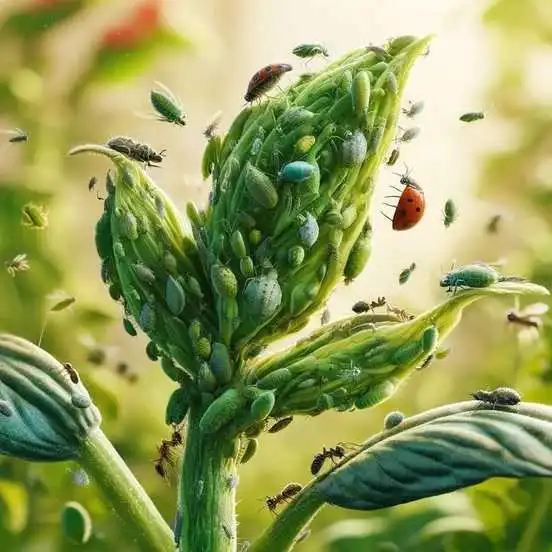Biological control, also known as biocontrol, is a method of managing pests, including harmful insects, mites, or diseases that affect plants and animals, by utilizing other living organisms. This approach harnesses natural processes, such as predation (one organism eating another), parasitism (one organism living on or in another), or herbivory (an organism called an herbivore consuming plants), but often requires active human involvement to guide the process. It is a vital part of many Integrated Pest Management (IPM) programs. Let’s learn how to control pests using biological methods.
Types of biological pest control
There are three basic biological pest control strategies: importation (classical biological control), augmentation, and conservation.
1. Importation (Adding New Predators)
Importation or classical biological control involves the introduction of a pest’s enemies to a new locale. This method involves a thorough study of the pest, its natural enemies (such as beneficial insects), and other beneficial organisms. Once suitable natural pest enemies are identified, researched, and gathered, they undergo quarantine to ensure they don’t carry diseases or parasites. Then, these beneficial organisms are carefully released. This release must be timed correctly with the pest’s life cycle, in areas where the pest is common, and where the newly released organisms won’t be disturbed. While this process is long and complex, successful outcomes can be impressive and lasting, provided that farming practices are gentle on these natural pest controllers.
Example: The alfalfa weevil, a pest that originated in Europe, caused significant problems for U.S. farmers, forcing them to use chemical sprays. To combat this, scientists introduced natural enemies called parasitoids and a fungus (known as Erynia phytonomi) from Europe. These beneficial insects specifically targeted and attacked the weevil’s larvae, adults, and eggs. Through dedicated programs, these helpful insects spread, and now, along with the fungus, they effectively keep alfalfa weevil numbers low. This natural control, combined with smart farming practices like specific cutting times and using pest-resistant alfalfa plants, has greatly reduced the need for chemical sprays, further protecting the very natural pest enemies that keep the weevil in check.

2. Augmentation (Boosting Existing Predators)
Augmentation means releasing extra natural enemies (beneficial organisms) into an area to boost the populations already living there. This method has two main approaches:
- Inoculative release: Here, small numbers of these beneficial agents are released regularly. The goal is for them to reproduce and establish long-term control, keeping pest populations low and preventing major outbreaks.
- Inundative release: In contrast, this involves releasing a large number of beneficial agents all at once. The aim is to quickly reduce an existing, damaging pest population, effectively correcting a problem that has already appeared.
While augmentation can be an effective strategy, its success isn’t guaranteed. It relies heavily on the specific relationships and interactions between the pest and its natural enemy.
Example: Beneficial nematodes are an example of releasing large numbers of natural enemies to quickly solve a pest problem. These tiny worms move through or on the soil, actively hunting and attacking insect pests. Once inside an insect, they release special bacteria that multiply and kill the host. The nematodes then feed on the bacteria and insect tissue, reproduce, and emerge from the dead insect after one to two weeks to find new hosts.

3. Conservation (Protecting Natural Predators)
Conserving the natural enemies already present in an environment is a keyway to control pests. These beneficial organisms are already adapted to their surroundings and the pests they target, making their conservation simple and often cost-effective.
For example, planting flowers that provide nectar (like those around rice fields) helps good bugs such as wasps and other predators. These good bugs then control pests like planthoppers. This simple trick has been incredibly successful, cutting down pest numbers by 10 to 100 times! As a result, farmers used 70% less bug spray and saw their harvests increase by 5%.

Conclusion
By understanding and strategically applying these methods, from careful introduction of new species to boosting existing ones and creating supportive habitats, we can significantly reduce reliance on chemical pesticides. Ultimately, integrating these biological strategies into pest management not only leads to impressive and long-term pest control but also fosters a healthier, more balanced ecosystem in our gardens and agricultural landscapes.





